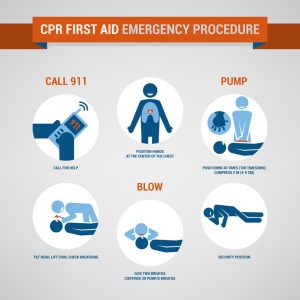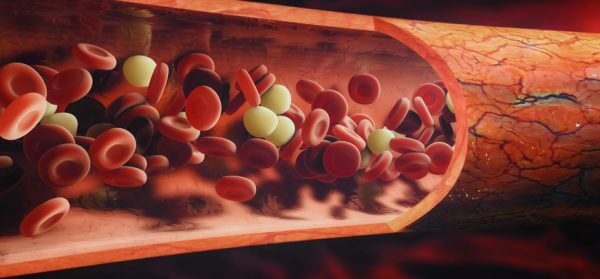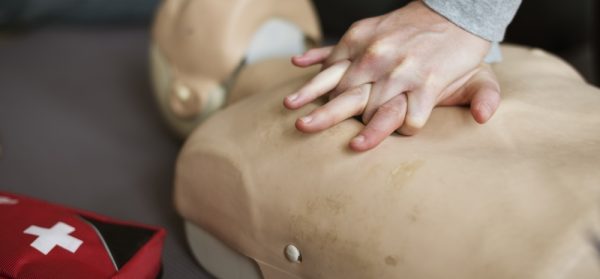
CPRNM® is a comprehensive directory designed to connect individuals and employers with top-tier training
providers including the AHA®, Red Cross®, and other training providers.*
Learn Which CPR Certification Class is Best for a Daycare or Childcare Worker
If you are a daycare worker in the United States, then you will need to take CPR certified classes. This is part of the child care licensing requirements that you need to meet. These requirements mean that you need to take child care provider training. If you are working with infants, then classes that concentrate on infant CPR will be part of the course. Infant CPR is different from regular CPR. There are two ways of earning certification and that’s through Online CPR Certification training or by Hands-On CPR Certification training.
Why Is Infant CPR Taught During CPR Certified Classes?
Infant CPR is different from regular CPR since infant physiology is much different than adult physiology. Infant bodies are much smaller than toddlers and children as well, and therefore child CPR is not appropriate either. Infants have vastly smaller lungs and chests. Far less pressure is needed for compressions and rescue breaths also must be shorter.
Like children, infants have flexible and soft ribs and sternums. This means that compressions are far less likely to cause bone breaks, where this is a common issue when CPR is administered to adults. The risks of possible complications and long-term problems caused by bone breaks are therefore reduced.
How Is Infant CPR Performed?
Like adult and child CPR, first-aid starts by checking if the infant is conscious and breathing. You also need to check for a pulse. The best place to find a pulse is along the upper arm. Check on the inside between the elbow and shoulder. If there is no pulse, then place two finger gently on the sternum and press straight down. The compressions should press the chest in about one to one and a half inches.
Provide two rescues breaths after about 30 compressions when providing CPR to an infant. While you are unlikely to see the infant regain consciousness when completing compressions in accordance with how your CPR certified classes tell you to, infants who receive CPR have higher survival rate when compared to adults. Specifically, infants and children are about 2% more likely to survive a cardiac episode.
When and How to Do CPR
When an individual becomes, unresponsive or stops breathing, a person who knows how to do CPR, or cardiopulmonary resuscitation, can save the person’s life. When done correctly, the blood continues to circulate through the body and the lungs will fill with oxygen. Discover when CPR is needed and how to perform this lifesaving procedure.
When CPR Is Needed
Common medical reasons why adults may require CPR include a heart attack, stroke and sepsis. Accidents that cause major injuries or extreme bleeding may also cause individuals to be unresponsive. Performing CPR on drowning victims is also quite common because of the amount of water that enters the lungs.
Prior To Administering CPR
Before beginning this procedure, individuals must ensure the area is safe. If the person does not respond when asked if they are okay, dial 911 so emergency help can get there as quickly as possible. An individual who knows how to do CPR should tilt the person’s head back so the chin is lifted. If no signs of breathing are noted, CPR must begin immediately.
How to Do CPR On an Adult
After confirming the person is unresponsive or has stopped breathing, the individual should place one hand on top of their other hand and press two inches into the person’s chest cavity using the weight of their body. The compressions should continue at a rate of 100 per minute. To give the person air, the individual should tilt the person’s head back, hold the nose closed and blow two breaths of air into the mouth. After completion, the individual should perform 100 more chest compressions and then alternate with breaths of air into the person’s mouth.
Learning how to do CPR can save a person’s life if they are unable to breathe on their own. This first aid procedure should be started and continued a person who is unresponsive until medical help arrives.
When You’re Unsure About Chest Compressions
The general wisdom is that chest compressions should always be given as a part of CPR when the victim of an accident or cardiac arrest is no longer breathing and has no pulse. Sometimes it’s not always perfectly clear in the moment if this is the right plan of action when you’re not a professional, but here are some answers for common worries.
If Someone Still Has a Slow Heart Rate
There isn’t a whole lot of data out there to fully figure out the answer, but one study showed that it was not likely to cause any complications in patients who did have a pulse after defibrillation and were given CPR. In fact, it’s recommended that chest compressions be used for infants who need CPR and in situations of critical care even if a weak pulse is still present.
If someone is clearly not breathing, you’re much better off going straight into CPR than worrying about the presence of a pulse and wasting time trying to accurately pinpoint it when you’re not a medical professional who can detect it quickly. Doctors and scientists now generally say that you’re better off safe than sorry when doing CPR.
If Someone Has a Pacemaker or Other Implanted Device
Even if someone experiencing cardiac arrest has a pacemaker, chest compressions are still recommended to keep their blood flowing. If they have an implanted defibrillator, it is possible that it will give off a shock during CPR and potentially feel unpleasant, but it won’t injure the person performing it. It would simply be felt as a tingling sensation on the surface of the body. With that said, when the person who receives CPR makes it to a hospital, they should have their device checked since it clearly has issues with functioning.
CPR Certification Class – Infant Rescue Breath Basics
A CPR certification class helps you to understand how to give first aid to adults, children, and infants. First aid practices and techniques are very different for all three of these groups of individuals. The techniques help to ensure that the aid you give is most likely to increase survival rates. When it comes to infants, rescue breaths must me provided carefully. Find out a few things about how the breaths differ.
Learning About Head Tilting in a CPR Certification Class
When an adult is given rescue breaths, you need to tilt the head back and lift the chin. This opens the airway so air can reach the lungs. However, tilting an infant’s head back can cause significant problems. Infants have very fragile and small airways that are easily blocked. Tilting the head too far backward or too far forward can cause the airway to close off.
To keep the airway open, you will learn during a CPR certification class how to gently tip the head back. The head should be positioned just far enough so the nose looks like it is lifted to sniff the air. This is referred to as the “sniffer’s position.”
Learning About Rescue Breaths
Young children and infants need rescue breaths in most situations. While a child can be given a slightly smaller amount of air than an adult, an infant should be given a very small puff of air. An adult has a total lung capacity of about 6 liters. An infant’s lung volume is only a small fraction of this.
Due to the very small volume, you will learn how to bring air into the mouth to puff out your cheeks. This air should then be released into the infant’s airway. In most cases, you will not have to close off or pinch the nose when providing rescue breaths. Your mouth should fit comfortably over the infant’s mouth and nose. An infant sized CPR mask can also be used to complete correct rescue breaths. You will learn about the use of these masks in a CPR certification class.
Is it Possible to Own an AED?
Many people assume that owning an automated external defibrillator is out of the question. They think it’s too costly or only for those with heart problems. That isn’t true. You don’t even need a prescription. State and local laws require AEDs in some locations, but private individuals can own them too. CPR certification isn’t required to have a Philips HeartStart Home Defibrillator, but it’s a clever idea to take classes. Trained individuals are better equipped to provide the right care.
Why Have an AED at Home?
The reason that everyone should have an AED is that most instances of cardiac arrest happen at home. Victims aren’t always aware of heart issues either. A visitor, a family member, or a neighbor may need immediate care. Emergency medical responders can’t always get to the patient on-time no matter how proficient they are. Having an AED at home provides peace of mind and increases the chance for survival.
What if a Shock Isn’t Needed?
Those who are inexperienced aren’t confident they will know when to use an AED, but the machine will make that determination. When the electrodes are in place on the chest, the machine reads the heart rhythm. It won’t work if doesn’t sense a heart rhythm problem. It guides the user through the process. If a shock becomes necessary, it warns the user to stand back before pushing the button. It also serves as a CPR guide and enables just about anyone to provide life-sustaining treatment until professional medical help arrives.
How Do I Know it will Work if Needed?
Even though a calming voice walks the user through each usage step, it’s a promising idea to familiarize yourself with the Philips HeartStart Home Defibrillator. Just as people use seat belts, helmets, first-aid kits, and other safety tools, an AED can be ready for use in a matter of seconds. Hopefully you’ll never have to use it, but if you do, it could save a life.
Summary
Chest compressions are an integral part of Basic CPR training. This article helps dispel myths about when you might think chest compressions can’t be used. It’s possible to own an affordable AED unit for home use, and without a prescription. It provides peace of mind and increases the chance for survival. When taking a CPR certification class, you will learn about administering infant rescue breaths. This is important for correct infant first aid.
Learn how to do CPR correctly and when resuscitation is necessary to save the life of a person who is unresponsive or who has stopped breathing. To save the life of a person who has stopped breathing individuals can learn how to do CPR by following these simple steps. Daycare and childcare workers are required to take CPR certified classes that concentrate on infant CPR. This is necessary since infant CPR is different.
Sources
Mayo Clinic
Medline Plus
Boston Scientific
U.S. National Library of Medicine
 May 8, 2017
May 8, 2017 







